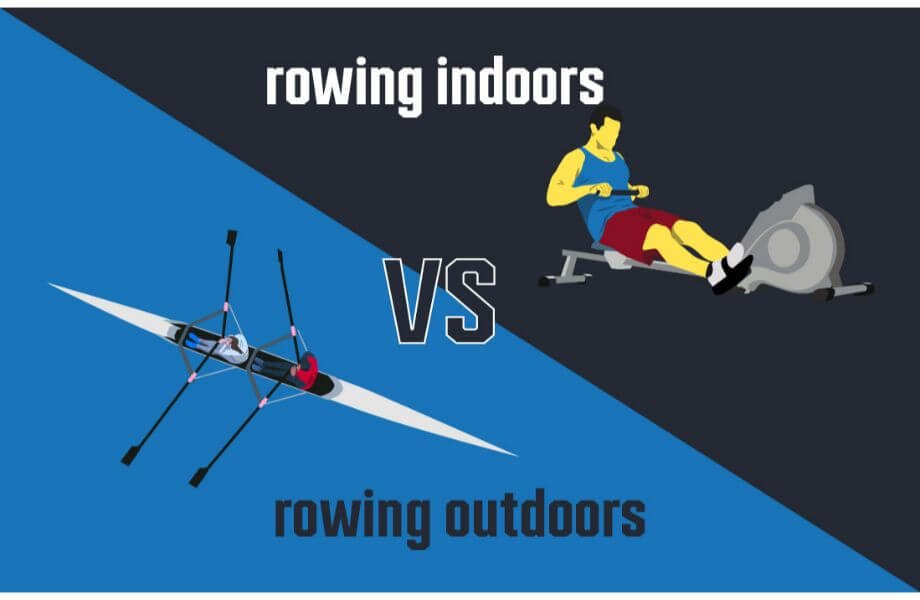We test and review fitness products based on an independent, multi-point methodology. If you use our links to purchase something, we may earn a commission. Read our disclosures.
Here are the major pros and cons of both types of rowing.
No matter where you do it, rowing offers a ton of health rowing machine benefits, like improved cardiovascular health and a low-impact, full-body workout. But there are several differences between indoor and outdoor rowing that might make you lean toward one option more than the other.
One isn’t necessarily “better” than the other; it really depends on what you like and your overall goals. Accessibility also comes into play in a major way here since outdoor rowing is impossible without a body of water.
In this guide, we’ll explain the differences between indoor and outdoor rowing and highlight the pros and cons of each.
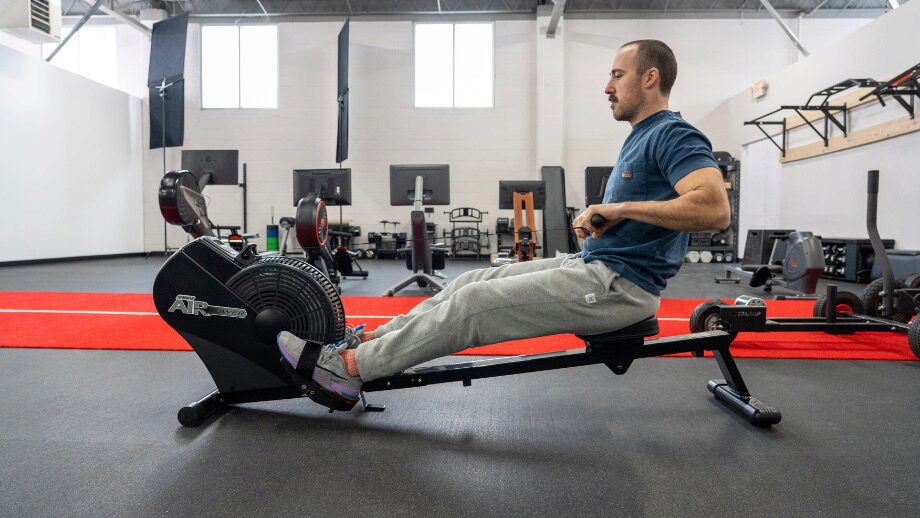
Outdoor Rowing Pros and Cons
Pros:
- Provides a more scenic view
- You get the added health benefit of being in nature
- Can do it with friends
- Requires more mind-to-muscle action and increased muscle control
Cons:
- Requires access to a body of water
- Need the proper gear and transportation
- You’re at the mercy of weather and water conditions
- Don’t have a ton of control over resistance
- Can be difficult for beginners
Outdoor Rowing Pros
There’s nothing quite like rowing on the open water. Here are some of the biggest perks.
Provides a More Scenic View
When it comes to the view, there’s no contest. Rowing outdoors is the more scenic option. Plus, you can switch up where you row so you always have something different to explore. Just like running on a treadmill vs outside, taking your workout outdoors may do a lot to keep you motivated and help you adhere to a long-term habit.
RELATED: Rowing vs Running
You Get the Added Benefit of Being in Nature
‘Physical activity has enormous health benefits, as does being in nature,” says Amanda Capritto, certified personal trainer and health coach. “And when you combine the two, magic happens.”
According to one study in Extreme Physiology & Medicine, exercising outdoors may help improve your mental health more than working out inside. Another study suggests that outdoor exercise may alleviate somatic anxiety—or the physical symptoms of anxiety—to a greater degree than indoor exercise.
Just being outside is beneficial, too. Exposure to the great outdoors has been shown to help combat stress, lower anxiety, and improve focus.
Can Do it With Friends
This isn’t a benefit that’s necessarily exclusive to rowing outside (you can certainly row at the gym or your local CrossFit box with friends, and smart rowers often have group modes), but it’s worth mentioning since there’s something extra special about working out with your friends outside—especially on open water.
If you have friends with boats, you can row side by side or even race. You can also grab a two-person shell and row together.
Requires More Mind-to-Muscle Action and Increased Muscle Control
Boats of any kind are inherently unstable, as they’re at the mercy of undulating water. In smaller vessels—like the type you’d row on, such as a kayak or canoe—you’ll recruit virtually every muscle in your body to keep the boat stable and on a safe path through the water.
This requires a lot of mental effort in addition to physical effort; you’ve got to think about your every move, compared to the repetitive motion you perform on an indoor rowing machine. The result? Greater mind-to-muscle connection and increased use of stabilizer muscles and core musculature.
Outdoor Rowing Cons
While there are plenty of pros to rowing outside, there are some downsides, too.
Requires Access To A Body Of Water
An obvious point that’s still worth stating: You can’t row on the open water without the water.
“If you’re in a landlocked area without any lakes or rowable ponds, rowing outdoors becomes considerably less accessible,” says Amanda.
Yes, you can travel to areas that make it possible to row, but this is certainly going to present a limitation if you’re trying to make rowing a regular (and easily accessible) part of your exercise routine.
Need The Proper Gear And Transportation
You can row in many different types of boats—kayaks, canoes, row boats, and even paddleboards all fit the bill. But if you want to optimize your workout and mimic the movements and muscle activation that you get with indoor rowing, you’ll need a boat with a sliding seat.
And there’s a big range in price there. Basic models can cost a couple thousand dollars, while more advanced setups can go for as much as $25,000. Yikes!
You’ll also need a way to transport the boat (and other gear like the oars and a life jacket) to your destination of choice, assuming you don’t live right on a lake or ocean. This generally means some sort of roof rack and a vehicle—both additional costs and considerations.
You’re At The Mercy Of Weather And Water Conditions
One of the downfalls of any outdoor workout is being at the mercy of the weather. You can have every intention to row outside but if the weather is bad and/or the water conditions are rough, it’s not a good idea to go out on the open water.
Because you’re subject to bad weather conditions (or even a simple accident), you should also have strong swimming skills if you’re rowing outdoors. If you can’t swim, a boat won’t be of any help should you capsize. Even in calm waters, accidents happen. Swimming skills are a must for outdoor rowing.
Don’t Have A Ton Of Control Over Resistance
Like indoor air rowers, rowing on the open water offers unlimited resistance.
“The faster you row, the greater the resistance, but you don’t have any manual control over that resistance like you do with magnetic resistance indoor rowers,” says Amanda.
Other things, like the water’s undercurrent, can also affect resistance and the feel of your rowing stroke, making your row easier or more difficult depending on whether you’re rowing with or against the current.
Can Be Difficult For Beginners
Anyone can row outdoors, but it definitely takes some getting used to. You need to get comfortable with balancing the boat and with rowing backward (the boat moves behind you). That kind of multitasking—paying attention to what you’re doing and where you’re going—takes some skill.
You also have to get a feel for how the oars should hit the water and how to direct yourself where you want to go. If you’ve never rowed outdoors, it’s a good idea to hire a guide or instructor to show you the ropes. This is another cost to consider when thinking about adding outdoor rowing to your workout regimen.
Related: Guide to Training for Outdoor Activities
Indoor Rowing Pros and Cons
Pros:
- No weather constraints
- More accessible
- Great for any fitness level
- Generally very safe
- Have more control over resistance level
Cons:
- Not as scenic
- Need to buy and store a rower
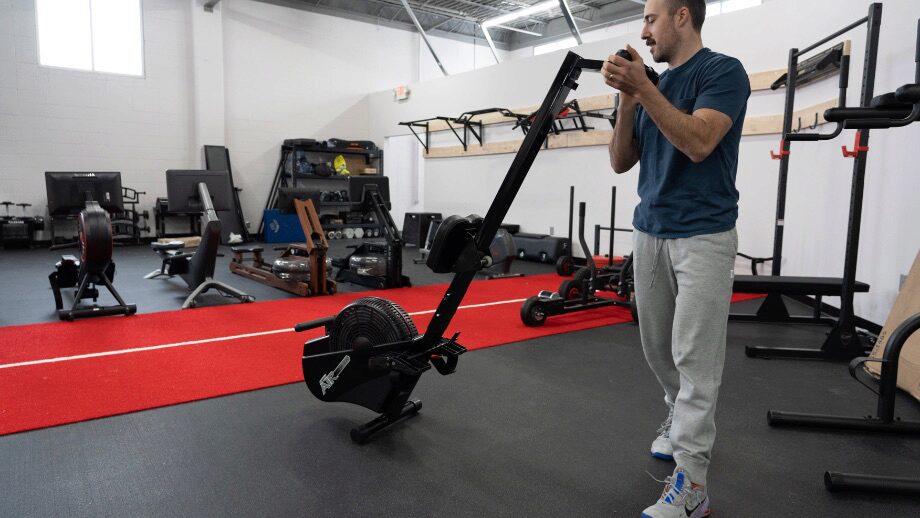
Indoor Rowing Pros
Now that we’ve highlighted the benefits and drawbacks of outdoor rowing, let’s look at some of the pros and cons of indoor rowing machines.
No Weather Constraints
When you’re working out in your home gym, you control the weather, for the most part. That means you can work out any day and at any time, no matter what’s going on outside. (This is also true of exercise bikes, ellipticals, and treadmills.)
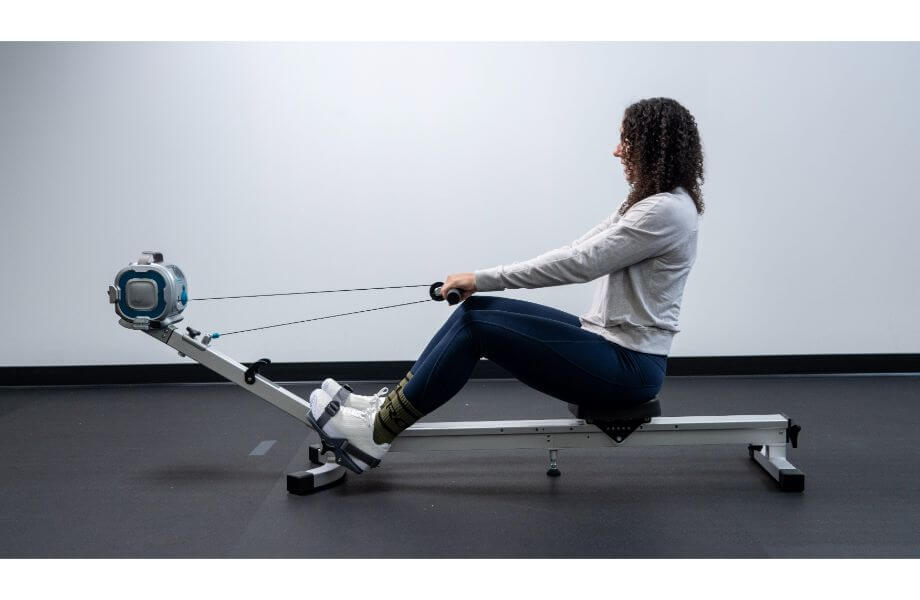
More Accessible
Because indoor rowing doesn’t require an actual body of water, it’s more accessible to people who live in landlocked areas. It’s also more convenient to just hop on a rower at your house than to pack up all your rowing equipment and hit the water.
Indoor rowers are also available at most health clubs, if you don’t yet have your own home gym.
Also, there are many superb indoor rowers available on Amazon and other online retailers, whereas buying a high-quality outdoor vessel may take more time and effort, as it’s best to speak to an outfitter about what best suits your needs and the bodies of water you intend to row on.
Great For Any Fitness Level
“Aside from nailing the proper rowing motion, there’s no real learning curve with indoor rowing since you don’t have to navigate actual water,” says Amanda. That means everyone from beginners to experts can do it. Additionally, indoor rowing machines offer real-time data you can watch as you row, so you see indicators of your performance while you work out.
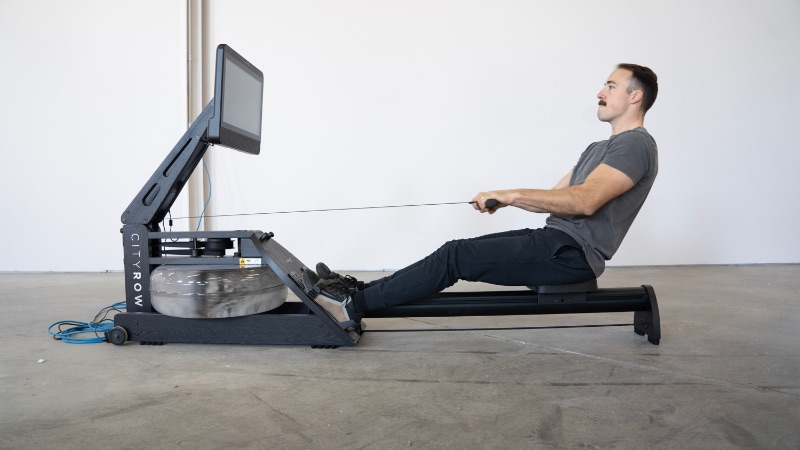
Generally Very Safe
Indoor and outdoor rowing are low-impact, so they’re both safe in that regard—meaning they’re not highly likely to cause physical injury. That being said, indoor rowing has an edge when it comes to safety since you’re not on an open body of water, and there’s no risk of capsizing or encountering dangerous weather conditions or marine life.
Have More Control Over Resistance Level
Depending on the type of rowing machine you use, indoor rowing may also give you more control over resistance level. Magnetic rowing machines, especially the higher-end models like the Hydrow, typically have resistance controls that you can set manually.
RELATED: Hydrow Review
Air ergometers like the Concept2 RowErg don’t have resistance dials, but they have dampers that you can use to manipulate how much air enters the flywheel. “This doesn’t affect the resistance directly, but it does change the feel of the rowing stroke,” says Amanda.
Indoor Rowing Cons
While there’s a lot to love about indoor rowing, there are some disadvantages. Here are some of the biggest cons.
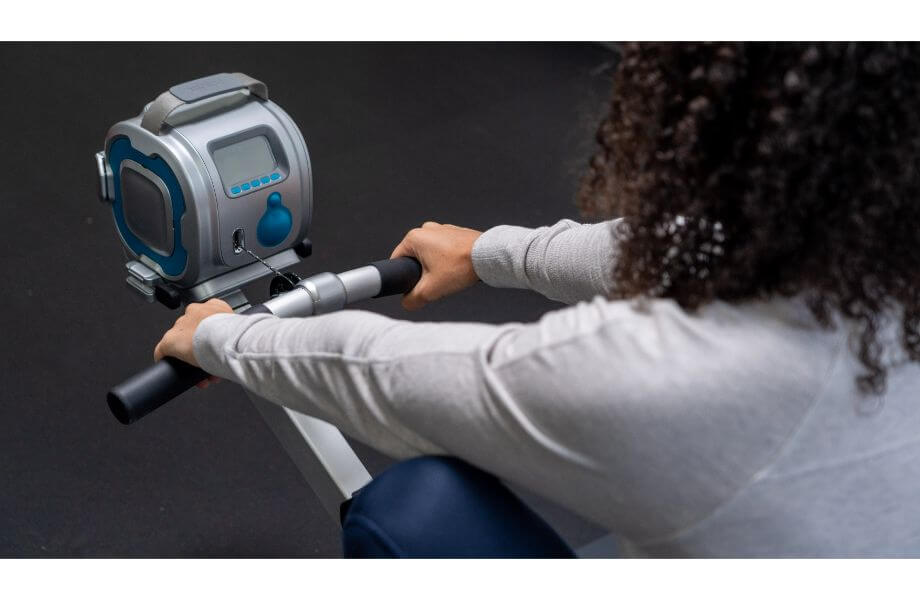
Not As Scenic
When it comes to scenery, indoor rowing can’t compare to the view you get when rowing outdoors. If you’re on an air rower, you’ll likely be looking at a basic performance monitor.
If you have a smart rowing machine, you can follow along with on-demand workouts and/or stream videos for a little more variety, but that doesn’t come with the added health benefits of being outside. And, as nice as the on-location videos on the Hydrow are, it’s simply not the same as actually spending time outdoors.
Need To Buy And Store A Rower
If you want to row at home, you’ll need to purchase (and store) a rowing machine, which can be a potential downside if you don’t have the budget and/or the extra space to dedicate to it. The other option is to join a gym that has rowing machines, which means you’ll have a recurring monthly cost.
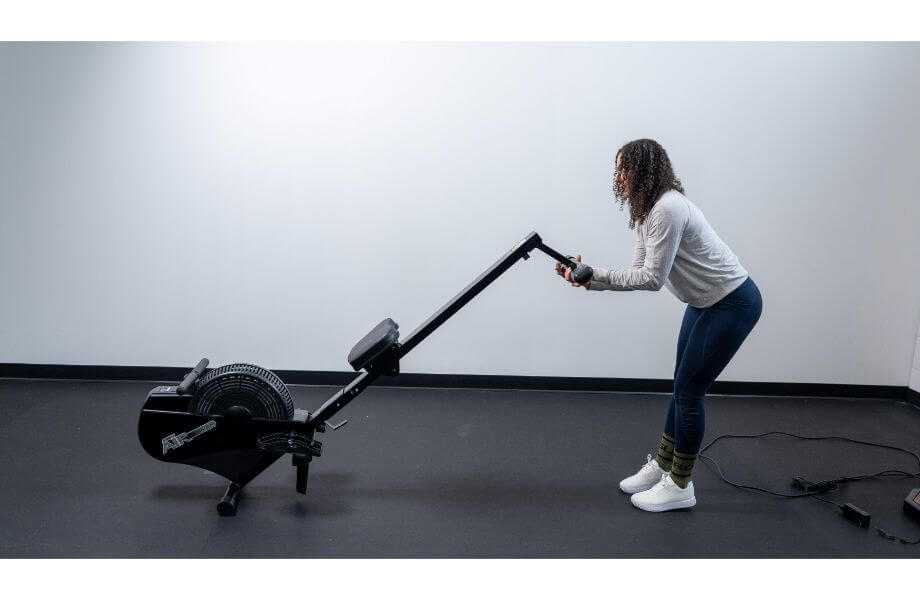
Rowing Outside vs Indoors: Muscles Worked
“Whether you do it outside or indoors, rowing is a full-body workout that offers some light-to-moderate strength training, too,” says Amanda.
Outdoor rowing has a slight edge since balancing the boat can require you to activate your core more and recruit more than just primary movers, but indoor rowing still works almost 85% of your muscles, including your core. The difference is really negligible here.
Rowing Outside vs Indoors: Calories Burned
Exact calorie burn is a difficult thing to measure, since it heavily depends on your body composition and your workout intensity, not to mention how adapted your body is to rowing, according to Amanda.
You also have to consider resistance level, which is highly unpredictable when rowing outdoors because of undercurrents and weather conditions.
Harvard Health estimates that a 185-pound individual burns 294 calories rowing at a moderate pace or 499 calories at a vigorous pace for 30 minutes on a stationary rowing machine. However, there are no studies directly comparing calorie burn when rowing indoors versus outdoors.
Rowing Outside vs On An Erg: Making Your Decision
Each type of rowing has its own set of pros and cons, so making your decision really comes down to your fitness goals.
Rowing outside is more scenic and can offer the added mental health benefit of being in nature, but it requires more equipment and access to a body of water. While indoor rowing can feel a little repetitive, it’s suitable for all fitness levels and you’re never at the mercy of the weather or water conditions.
The bottom line? “Row wherever rowing feels best to you,” says Amanda. “The exception is if you’re training for a regatta (AKA a rowing competition) or training with a sculling or rowing club. In that case, rowing outdoors is necessary to develop the real-world skills you need for unpredictable outdoor activities.
Difference Between Indoor and Outdoor Rowing: FAQs
Which is more difficult: indoor or outdoor rowing?
Overall difficulty really depends on your skill level, but in general, outdoor rowing is a bit tougher for a couple reasons. First, it takes more practice. You have to get used to navigating the open water, and the feel of moving backwards if you’re using a true row boat. You also have to pay more attention to your balance and any potential obstacles you may encounter.
Water conditions can also be unpredictable. When you’re on an indoor rower, you don’t have to worry about waves or wakes from other vessels on the water. When you’re doing a rowing workout outside, you have to consider all of these factors and more.
Is outdoor rowing a good workout?
Both types of rowing are excellent cardio workouts and will certainly get your heart rate up. Assuming you’re utilizing a rowing boat with a sliding seat, outdoor rowing is a total-body workout that engages all your major muscle groups, including your lower body and upper body. Because rowing outside requires more balance and rotation than indoor rowing, you also get more of a core workout.
What type of rowing machine is best for home use?
There are four main types of indoor rowing machines—water, air, magnetic, and hydraulic. The best rowing machine for home use really depends on your preferences and what you’re hoping to get out of your machine.
For example, water rowers mimic the feel of open water rowing most closely, but magnetic rowing machines give you manual control over your resistance level. Our favorite rowing machine is the Concept2 Model D (now called the Concept2 RowErg), which is an air resistance rowing machine that operates with a fan-based flywheel.
Further reading

Pull, push, and raise your way through our list of the best power towers on the market today. Read more

Looking for a treadmill walking workout to follow? We’ve got three options here written by a certified personal trainer. Read more

Thinking about trying water fasting? Before you dive in, discover what a registered dietitian wants you to know to stay safe and healthy. Read more

Are your hammies squealing after Leg Day? We've collected the 7 best hamstring stretches and mobility exercises from a certified personal trainer. Read more

